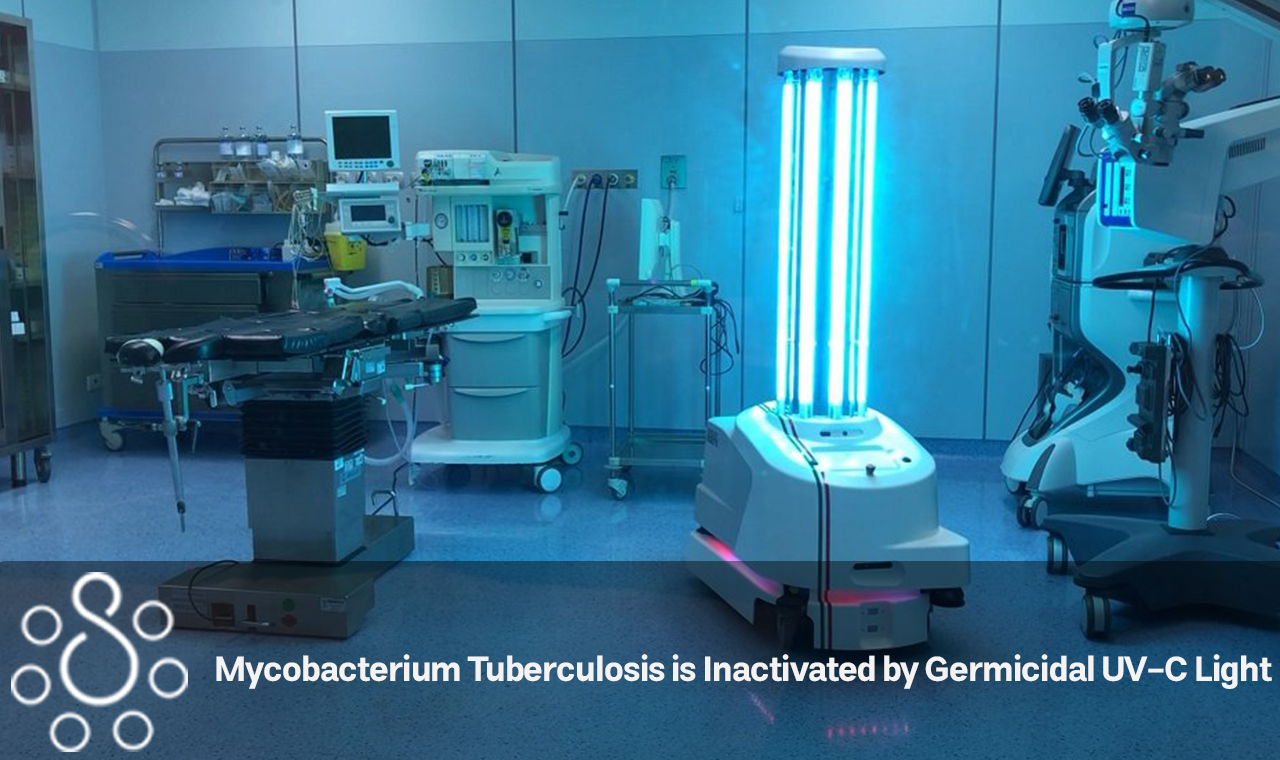The bacterium known as Mycobacterium tuberculosis is responsible for the illness known as tuberculosis (also known as TB). When a person who is actively ill with tuberculosis of the lungs or throat coughs, sneezes, talks, or sings, the germs that cause the illness are released into the air. Even though the lungs are the most common target of M. tuberculosis germs, the bacteria may infect any area of the body, including the kidneys, spine, and brain. The tuberculosis bacteria may cause infection without always leading to symptoms of illness. As a direct consequence of this, there are two conditions that are associated with tuberculosis: latent TB infection (LTBI) and tuberculosis disease. The TB illness might be lethal if it is not treated in the appropriate manner. To make the most use of this knowledge, we must find out how UV-C light inactivates Mycobacterium tuberculosis.
Eliminating the Risk of Tuberculosis
The incidence of tuberculosis is significantly higher in a number of other countries than it is in the United States. In crowded, enclosed spaces, travelers should avoid close contact with known TB patients as well as extended periods of time spent with them (for example, in clinics, hospitals, prisons, or homeless shelters).
Our products make use of STER-L-RAY® Germicidal UV-C Lamps, which are responsible for creating ultraviolet wavelengths at 254 nanometers. This is the area of germicidal efficiency that is the most damaging to dangerous pathogens, such as Mycobacterium tuberculosis. At the dosages listed below, germicidal ultraviolet C (UV-C) air disinfection will inactivate M. tuberculosis bacteria, thereby reducing the risk of TB disease transmission.
Related Article: Is UV-C light harmful for air ducts and electronics?
Individuals Who Have a High Chance of Developing Tuberculosis
People who are infected with tuberculosis but do not get treatment for their latent infection are at a higher risk of developing tuberculosis illness at some point in their life. People who are at a high risk of contracting tuberculosis include:
- People who have close contact with someone who has TB sickness
- People who have moved to a new country from a region that has a high risk of tuberculosis (TB)
- Children less than 5 years old who have a positive TB test but are not yet infected
- Populations that have a higher than average risk of TB transmission (homeless, injection drug users, and those with HIV)
- People with weak immune systems, especially those with any of the following:
- infection with HIV (the virus that causes AIDS).
- Misuse of substances
- Silicosis
- Diabetes mellitus
- Chronic illness affecting the kidneys
- Low body weight
- Organ transplants
- Cancer of the head and neck
- Medical procedures such as corticosteroids and organ transplants are examples of such treatments.
- Treatment tailored specifically for conditions such as rheumatoid arthritis or Crohn’s disease
Related Article: Learning to use and set up Surya Professional disinfectant with UV-C sterilizer box
The Signs and Symptoms of Tuberculosis
According to the Centers for Disease Control and Prevention (CDC), the bacteria that cause TB often develop in a person’s lungs and may produce the following symptoms:
A severe cough that has lasted for three weeks or more or chest discomfort that is accompanied by vomiting blood or sputum (phlegm from deep inside the lungs). The section of the body that is afflicted determines the symptoms that appear in other areas of the body. Other probable signs of tuberculosis include the following:
- a state of exhaustion or weakness
- weight loss. Appetite loss, fever, and chills
- nighttime perspiration
Find Out More, and Look Through Our Inventory of Products That Can Eliminate the Mycobacterium Tuberculosis.
The Air & Surface Disinfection product lines from Atlantic Ultraviolet Corporation® are constructed of the highest quality materials and use germicidal UV-C lamps to disinfect the air, rendering microorganisms like Mycobacterium Tuberculosis inactive. These product lines are made in the United States of America from parts made in the United States as well as parts made in other countries.
Related Article: What UV light is best for plants

Table 1: Classification of Mycobacterium Tuberculosis and Germicidal UV Dose for Inactivation
| Organism: | Alternate Name: | Type: | Disease: | UV Dose*: |
| Mycobacterium Tuberculosis | M. tuberculosis | Bacteria | Tuberculosis (TB) | 10.00 mJ/cm2 |
Ultraviolet Germicidal Irradiation-UVGI
Ultraviolet Germicidal Irradiation, also known as UVGI, is the process of using a specific kind of ultraviolet radiation called UVC, which research has shown can kill or render M. tuberculosis inactive in the air. UVGI stands for ultra-violet germicidal irradiation, and it is produced by air purifiers that have been specifically designed to utilize UVC lamps, which frequently resemble fluorescent light bulbs. There are two different applications for UV lamps in the treatment and prevention of tuberculosis:
- upper-room The use of ultraviolet germicidal irradiation lamps, or UVGI for short, in a space where there is a possibility of M. tuberculosis transmission is an example of UVGI. It is an effective method for preventing the spread of infection in crowded areas that are at risk of being used by a person who has tuberculosis (TB), such as prison day rooms, homeless shelters, and waiting rooms.
Upper-Room UVGI
The upper-room UVGI system utilizes lamps that are mounted at a height of at least seven feet. The fixtures are built in such a way that the air in the upper part of the room is irradiated and disinfected. Infectious particles are reduced in concentration as a result of the mixing of cleaned air with the air in the lower part of the room. It is necessary to take readings of the radiation levels in the room’s lower areas in order to ascertain whether or not they fall outside of the acceptable range. Because of the need to prioritize employee safety, upper-room UVGI should be designed, installed, and maintained with extreme caution. Also, the effectiveness of each installation can be different, and each one is unique.
Related Article: Is the UV-C light leaking from my air purifier safe?
UVGI Inside the Duct
Lamps are positioned in such a way that they are perpendicular to the flow of air in an in-duct UVGI system. The vast majority of recirculated air ought to be properly disinfected by an in-duct UVGI system that has been carefully designed, installed, and maintained. As a result, the effectiveness of the system that uses recirculating mechanical ventilation to reduce the risk of M. tuberculosis transmission will be significantly increased as a result of this. Lamps that are used inside a duct should have higher UV intensities than lamps that are used for upper-room UVGI. This is both possible and recommended.
This is because there is a low chance of receiving an excessive amount of UV exposure. To ensure that the air in the duct receives an adequate dose of radiation, the number of lamps and their distance from one another are chosen based on the airflow being measured. The amount of exposure one receives is proportional to both the strength of the radiation and the length of time spent in its presence. It is necessary to provide an access door to the ductwork so that the lamps can be checked, cleaned, and replaced as needed. Electrical interlock should turn off the lamps whenever the duct access door is opened to prevent anyone from being exposed to the light from the lamps. In-duct UVGI is also used in air cleaning units that are completely self-contained.
Concerns About the Safety
UVGI has the potential to cause momentary damage to both the eyes and the skin. However, the use of UVGI can be made both safe and effective by utilizing more recent fixture designs and adhering to the guidelines. Whenever UVGI is used, it is imperative that appropriate precautions be taken to alert and protect both staff and customers. Additionally, the staff ought to receive the appropriate education. On fixtures and in areas where UVGI is used, there should be warning notices placed in any and all languages that are relevant.

